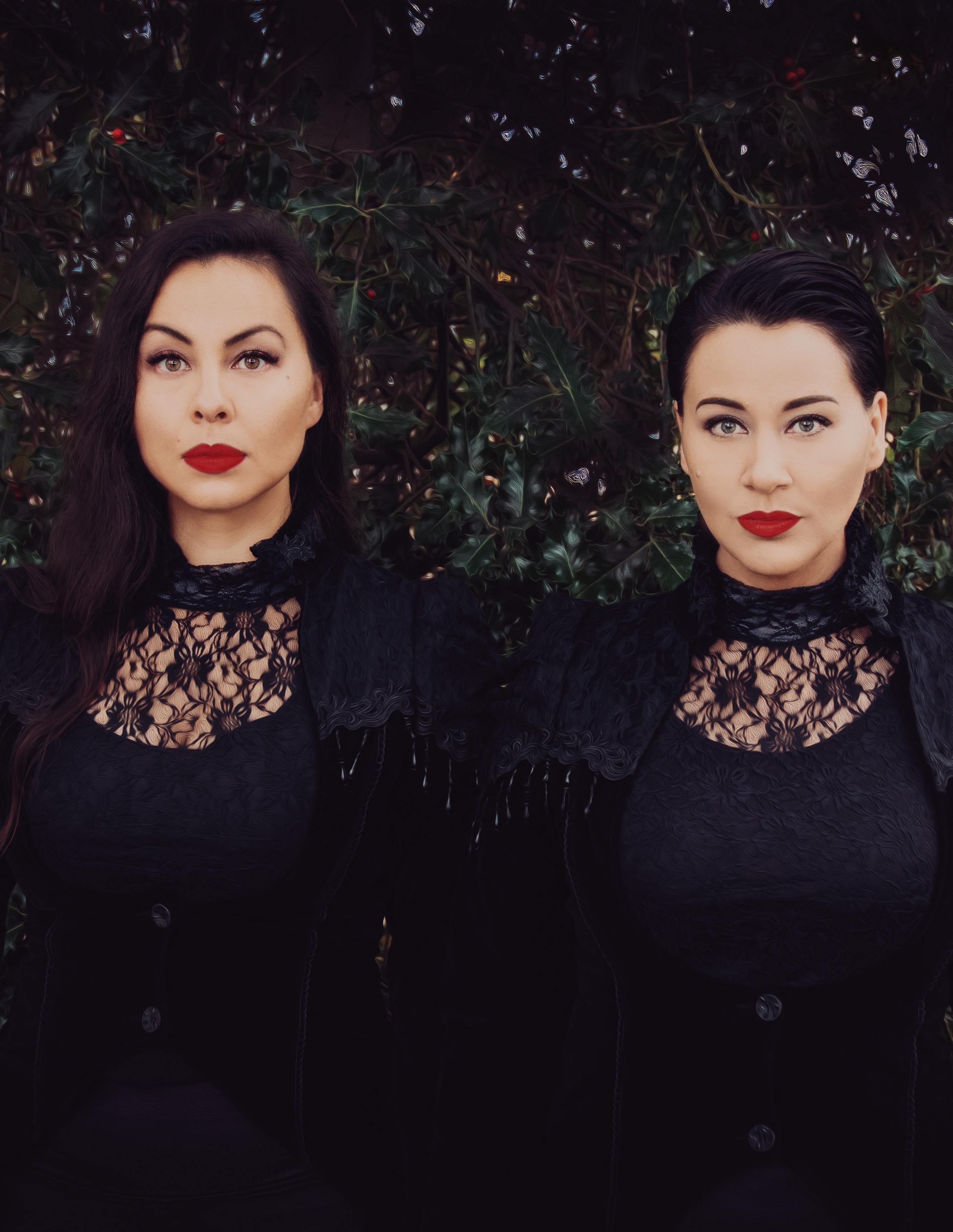
NATIVE WOMEN’S ASSOCIATION OF CANADA MAGAZINE [kee/chi - nee/wesk] noun THE GREAT SPIRIT OF THE FEMALE SIDE OF LIFE OF ALL THINGS HOLiDAY iSSUE HOLIDAY ADVICE A THROAT - SINGING CHRISTMAS ALBUM Take cues from nature EMBRACING HOLIDAY CUSTOMS OF YOUR ANCESTORS no. 15

KCI - NIWESQ • NWAC 2

KCI - NIWESQ • NWAC 3 14 THE HOLIDAY SEASON The beauty and art of craft-making at Christmas time 20 ARTISANS CATHERINE BYRNE & ALICIA ASP - CHIEF The Social, Cultural, and Economic Innovation Centre of NWAC Poem by Tenille K Campbell 22 06 HOLIDAY DECORATIONS OUR WISH FOR YOU Embracing throat singing at Christmas 16 PIQSIQ A time to pray, reflect, and reconnect A time for sharing and celebration, a time for coming together 10 WINTER SOLSTICE 08 WINTER TEACHINGS Message from the CEO / directrice general LYNNE GROULX 05 MIIGWETCH CONTENTS
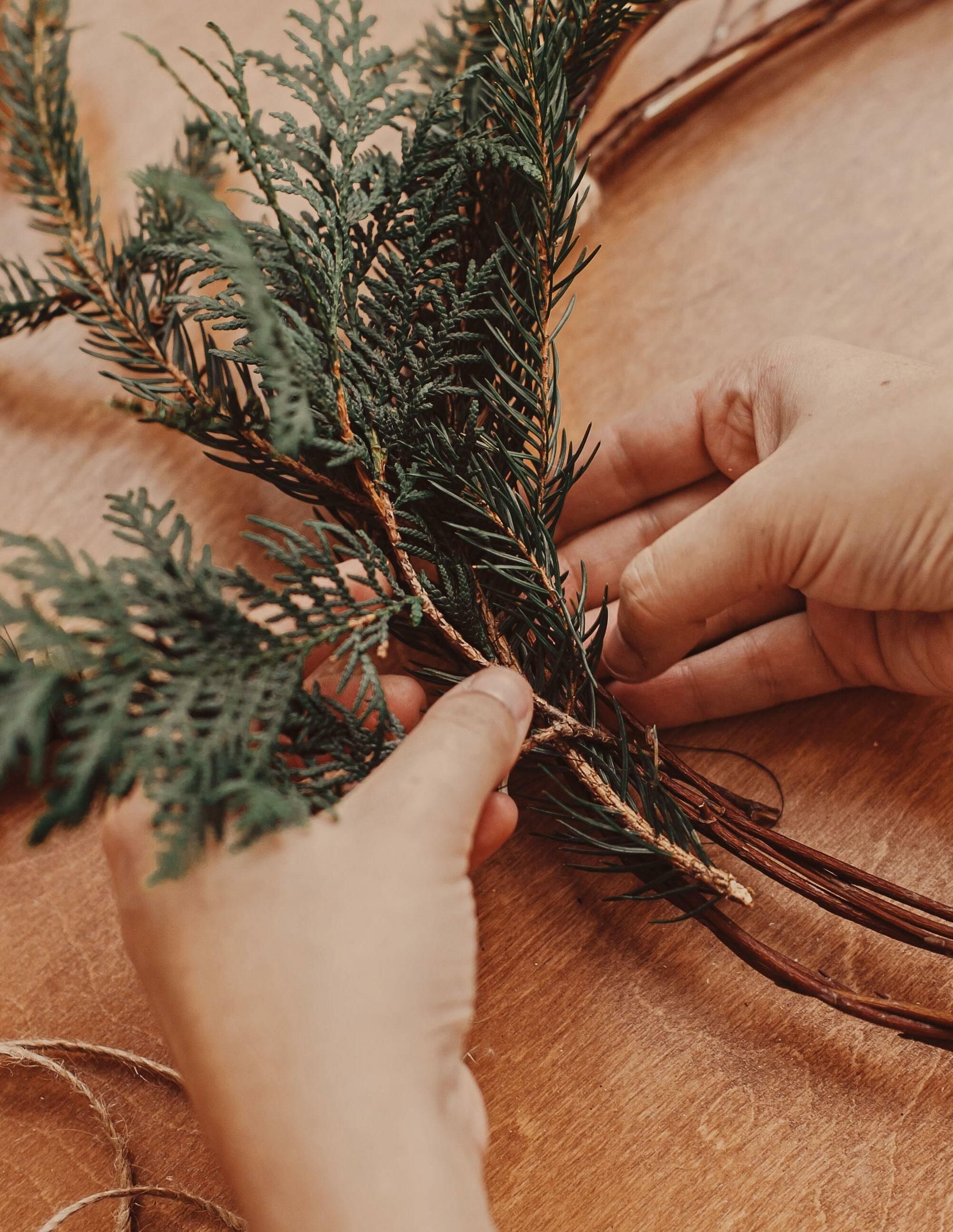
KCI - NIWESQ • NWAC 4
WELCOME TO THE 15TH EDITION OF KCI - NIWESQ, THE MAGAZINE OF THE NATIVE WOMEN’S ASSOCIATION OF CANADA.
We invite you to join us in celebrating the holiday season, as we share with you some of the beautiful Indigenous decorations we are enjoying this month at NWAC’s Social, Cultural, and Economic Innovation Centre in Gatineau, Quebec, which opened last spring. As the Centre is a hub for Indigenous art, it is only fitting that we have decked it out, not with balls of holly but with the beautiful artisan craftwork of Indigenous
For some, the holiday season is about Christmas. But Indigenous Peoples were marking the winter solstice long before European contact. It is a time of year when long nights and winter temperatures call for warmth and light and communion with family and friends.
Within these pages, Clan Mother Janie Hill says winter reminds us to slow down and practise quiet reflection. She suggests that we take a cue from the bears and turtles who are resting and rejuvenating in preparation for the year ahead.
We also talk to Blair Stonechild, a professor of Indigenous Studies at First Nations University of Canada and author of two books about Indigenous spirituality. He tells us that Indigenous people who have moved away from the Christian church to embrace the customs of their ancestors can still find much joy in the holiday season.
You will hear from Diane Montreuil, a Knowledge Keeper and leader of the Art & Culture Society for the Métis Nation of Canada. She tells us about the way her family members celebrated Christmas and New Year, with Métis traditions even though they did not directly acknowledge their ancestry.

Inuksuk Mackay, one of the two sisters who make up the singing duo PIQSIQ, explains their throat singing on the Christmas album Quviasugvik: In Search of Harmony. Throat singing was once prohibited by the Christian church. But it has made a resurgence, and
incorporating it into old Christian standards was a way to honour the season that felt honest and true.
Two Indigenous artisans, Catherine Byrne and Alicia Asp-Chief, tell us that making Christmas ornaments—which are being sold in NWAC’s Artisanelle boutique—helps put them in a holiday mood.
So, thank you once again for opening the pages that follow. Thank you for reading the 15th edition of KciNiwesq. Please drop us a line and let us know what you think at reception@nwac.ca.
MIIGWETCH.
KCI - NIWESQ • NWAC 5
OUR W i SH FOR YOU
BY TENILLE K CAMPBELL
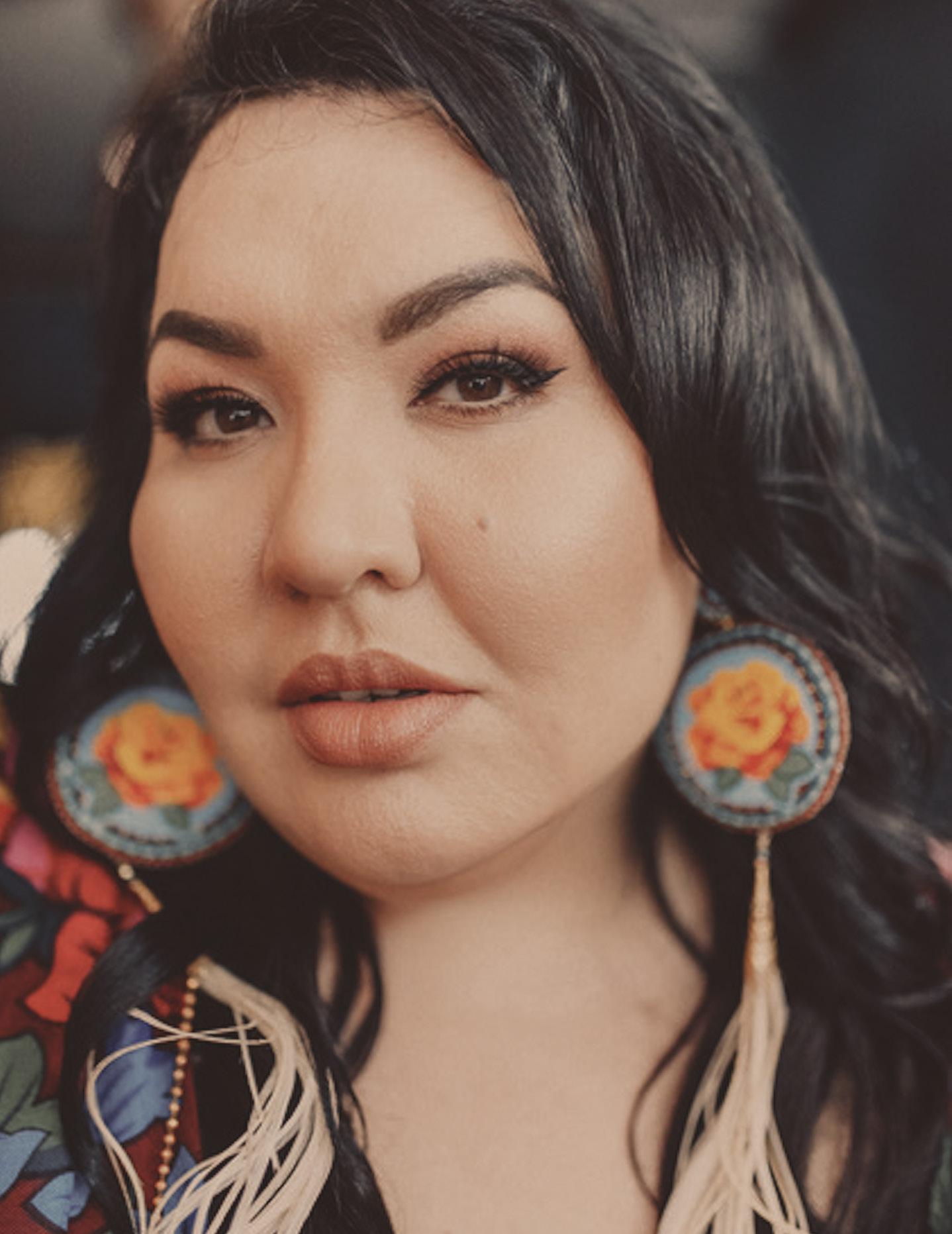
KCI - NIWESQ • NWAC 6
OUR W i SH FOR YOU
by Tenille K Campbell
We wish you a holiday filled with grandmothers who smell like home when they hug you reminding you where you come from
We wish you a holiday filled with mothers who wash dishes and laugh with heads tossed back as you share coffees around the kitchen table
We wish you a holiday filled with aunties singing Boney M with the radio loudly and off key
We wish you a holiday filled with daughters who still tell you their secrets and stories while you braid their hair and listen well
We wish you a holiday filled with nieces who hug you tight and tell you you give the best gifts
We wish you a holiday filled with cousins who spill into the house with food to share bringing in the cold air and the loud laughter
We wish you a holiday filled with joy
KCI - NIWESQ • NWAC 7
Tenille K Campbell is a Dene / MEtis poet and photographer from English River First Nation, SK, and is currently enjoying the season by attempting to watch every holiday movie she can.
W i NTER TEACH i NGS
Mother Earth embraces us in a blanket of snow each winter as a reminder to slow down and practise quiet reflection. Winter is also an essential season for all creation —a time for rest and nurturing.
“It’s a time of reflection and rejuvenation not only physically, but also spiritually and psychologically. You need that quiet time to settle your mind, to be able to focus on things and take care of your spirit and your emotions, as well as your body,” says Janice Hill, Clan Mother of Turtle Clan, Mohawk Nation.
While summer is often referred to as a season of productivity and growth, winter is also a time of growth—albeit in an entirely different way. Winter is a time for internal progress, a time to give special attention to our spiritual, emotional, and mental health.

“We take our cues from nature,” says Ms. Hill. “The bears and turtles, they’re also taking their cues from nature, and we take our cues from them. They’re hibernating and resting and rejuvenating. And our mother, the Earth, also rests. It’s a time for her to rejuvenate as well and to take a rest from all the work of the past growing season and to prepare for the next growing season.”
The idea that rest is a luxury is not only counterproductive in health, but is also detrimental for future productivity and creation, Ms. Hill explains.
“Some people are so busy, you know, surviving— doing all you need to do to survive, like harvesting and preserving and getting food ready, and
looking after the earth to get it ready for spring,” says Ms. Hill. But, she adds, if Mother Earth does not rest, or does not rest well, everyone suffers.
“We’ve seen this when we have not had a fulsome winter, when she hasn’t rested well, and it reflects poorly in the next season of growth,” Ms. Hill says. Just like people, Mother Earth can also burn out without proper rest.
“Rest is not selfish; it’s actually necessary. If I am going to take care of my community, and my clan as a Clan Mother, I have to take care of me,” Ms. Hill says, admitting she also needs to remember to take cues from Mother Earth to slow down and care for herself during the winter season. “It’s about being healthy and nurturing ourselves as well as others.”
Though all living creatures need to follow Mother Earth’s cues and slow down in winter, Ms. Hill says women and girls especially need to make time for themselves during these integral months of emotional and spiritual restoration.
“I think it’s really important for us to teach, especially young women, how to nurture themselves as well as those around them. You can become so focused on looking after everyone else that you forget to look after yourself,” says Ms. Hill.
Through colonization, and an overall mentality that busy is better, people tend to overlook Mother Earth’s winter cues for rest and rejuvenation.
“Losing sight of taking care of ourselves has been a real disadvantage. It’s important that we revisit
KCI - NIWESQ • NWAC 8
WINTER IS A TIME OF REST, REJUVENATION, NURTURING, AND QUIET REFLECTION. WE NEED TO TAKE OUR CUES FROM MOTHER EARTH
those things and we encourage self-care. And teach that it’s not selfish to rest,” says Ms. Hill.
Taking time to reset and reflect allows people to narrow their focus on strengthening connections with friends, family, and community.

“We need to also focus on our relationships with each other and how we communicate together and how we support each other,” says Ms. Hill, adding that it’s important to stay “attuned” to lifting one another up during this period of personal reflection and inner growth.
“If someone is maybe struggling a little bit, figure out how to help that person. What do they need to lift their spirit up? Or what do they need so that they feel supported, and so they feel connected?” says Ms. Hill.

Most importantly, winter is a time spent with family. It’s a time when people gather at home, do not travel far, and share stories. It is integral that storytelling continues through winter, so these shared teachings are passed down to younger generations.
Prioritizing the importance and traditions of coming together in the slow, cold, winter months is crucial to not lose sight of, says Ms. Hill.
“It’s time to think about holding our children close, teaching them, caring for them, and nurturing them.”
“WE TAKE OUR CUES FROM NATURE. THE BEARS AND TURTLES, THEY’RE ALSO TAKING THEIR CUES FROM NATURE, AND WE TAKE OUR CUES FROM THEM. THEY’RE HIBERNATING, RESTING, AND REJUVENATING. AND OUR MOTHER, THE EARTH, ALSO RESTS.”
- JANICE HILL
Pictured: Clan Mother Janice Hill
KCI - NIWESQ • NWAC 9
"Winter is a time to think about holding our children close, teaching them, caring for them, and nurturing them."
W i NTER SOLST i CE
A TIME TO PRAY, REFLECT, AND RECONNECT
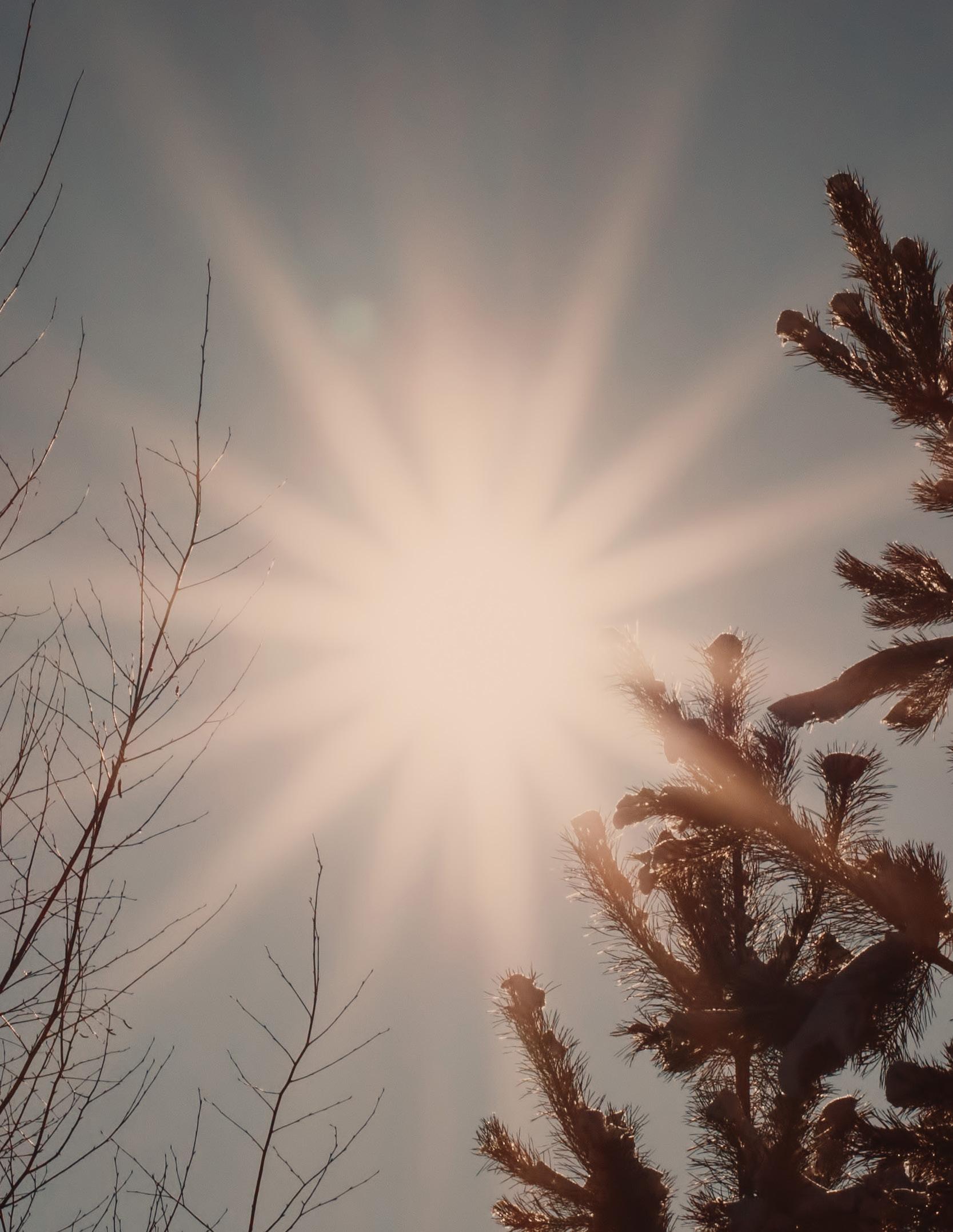
KCI - NIWESQ • NWAC 10
Many Indigenous Peoples feel conflicted about Christmas. We spoke with a Residential School survivor and professor of Indigenous Studies who encourages everyone to seek personal and spiritual meaning in the season.

Indigenous people who distance themselves from Christianity and embrace the spirituality of their ancestors can feel conflicted at Christmas time. But one expert says much meaning can be found in the season, even by those who are not followers of the church.
Blair Stonechild, a professor of Indigenous Studies at the First Nations University of Canada and a residential school survivor, says he and his family continue to enjoy many of the holiday traditions of his Catholic upbringing. They put up a Christmas tree, for instance.
In a recent interview, Dr. Stonefield said he and many others have come to realize there is much value to be learned from Indigenous beliefs—at Christmas and other times of the year—especially when those beliefs are contrasted with the overt commercialization of Christian celebrations.
Across Canada, Indigenous people who have been raised in the Christian faith—in some cases, facing penalties for practising their own spiritual traditions—are relearning the old ways, which vary from culture to culture. Dr. Stonechild, who has written two books about the issue, The Knowledge Seeker: Embracing Indigenous Spirituality and the Loss of Indigenous Eden and the Fall of Spirituality, says there are some principles that apply to all Indigenous spirituality throughout the Americas.
“One is the idea that humans are not central to creation, but rather we are part of creation,” he says. “It’s that we’re here to learn from physical life but we’re not the central purpose, and we were given the original instructions to live in harmony and to respect the rest of creation.”
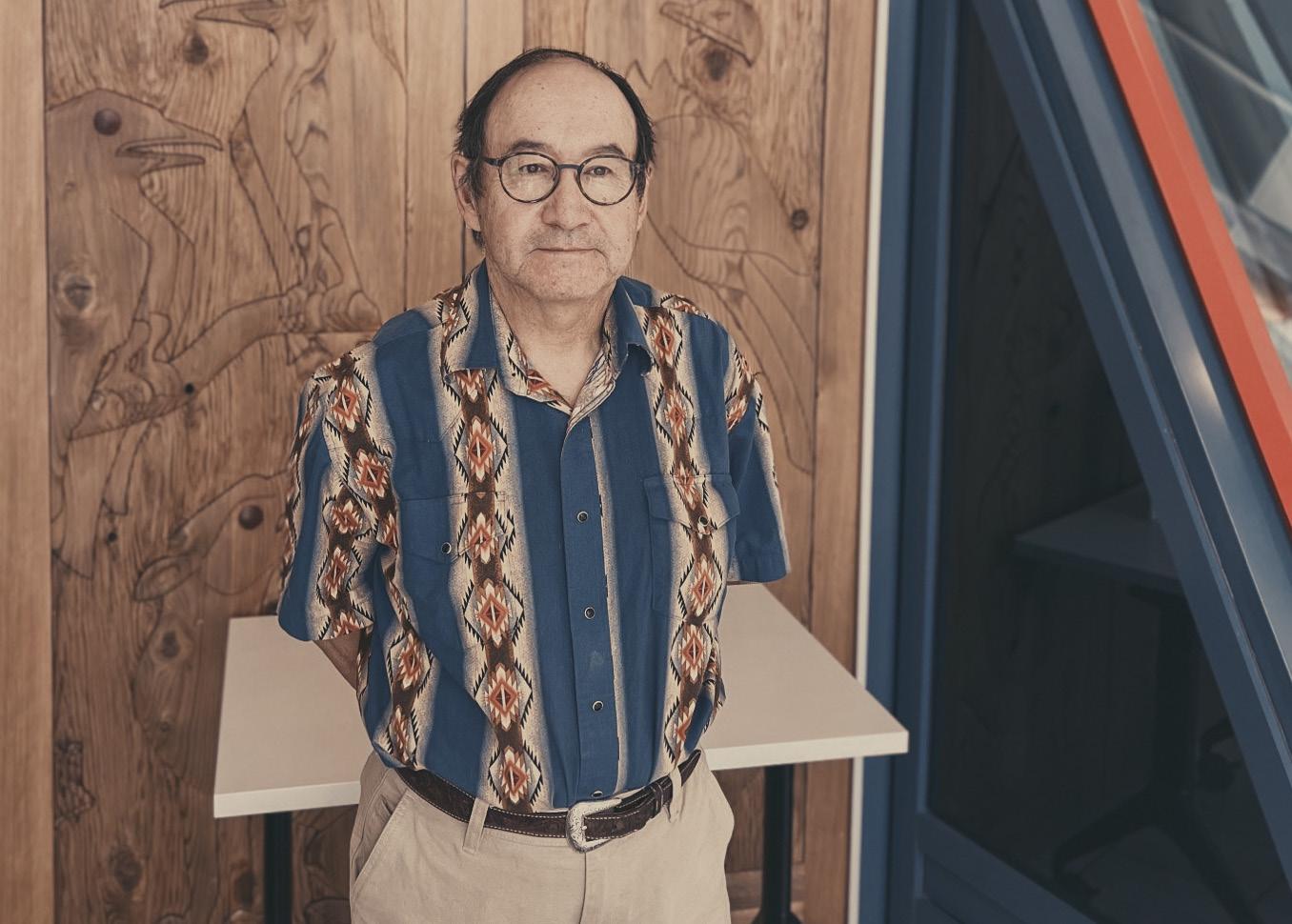 Pictured: Dr. Blair Stonechild taken by First Nations University
Pictured: Dr. Blair Stonechild taken by First Nations University
KCI - NIWESQ • NWAC 11
Winter Solstice
A TIME TO PRAY, REFLECT, AND RECONNECT
- DR. STONECHILD
The Abrahamic religions, such as Christianity, Islam, and Judaism, look much different, says Dr. Stonechild. “They placed humans at the centre of creation. And this created a whole different dynamic between people and the rest of creation. Because of that, what I say in my books is that we have ‘gone off the good road’.”
Many people would like to reconnect with their Indigenous spirituality. Ways of doing that include attending pipe ceremonies or sweat lodges.
Dr. Stonechild also recommends reading his books, which were developed through years of working with Elders. They deal with two things, he says. One is humanity’s purpose for being on Earth, which he calls The Great Principle. And the second, which he calls The Great Law, is the way people are expected to behave during their physical lives.
For the Indigenous ancestors, spirituality was about living in harmony with the environment. Part of that, he says, was acknowledging the changing cycle of the Earth. This includes the winter solstice, which was acknowledged by people all over the world long before the Christian Church set aside December 25 to mark the birth of Christ.
In Canada, in times before the Europeans first arrived, the winter solstice was something to celebrate, but not in the way Christians celebrate Christmas, says Dr. Stonechild.

“You have to put yourself in a whole different mindset,” he says. Mid- to late-December was a challenging time for the First Peoples who lived in the country that is now called Canada.
“The North is actually identified in many traditions with hardship and death,” says Dr. Stonechild. “So, this was a time when many people who talk about Indigenous ways say it was a time to reflect and a time to pray and a time to reconnect with the purpose of why humans are on Earth, and what they need to be doing in order to survive.”
It was a prime indoor time for teaching and storytelling. “The winter solstice was a time for praying for the cycle of life to continue,” he says. “It had to do with reconnecting with our spirituality. The whole purpose of religion, spirituality, was about healing.”
Many Indigenous solstice traditions have been lost over time, says Dr. Stonechild, in part because of the large number of Indigenous children who were forced to attend the Christian residential schools, and because of actual bans that were placed on the practice of Indigenous spirituality. But cleansing in sweat lodges, fasting, prayer, and meditation were certainly part of the ceremonies. The problem with modern society, says Dr. Stonechild, is that it’s so materialistically oriented. “The whole culture is no longer about respect for the environment, let alone respect for each other,” he says. “It’s a disregard for relationships and even for spirituality.”
There is nothing wrong with celebrating Christmas, says Dr. Stonechild. “But I think we also need to be cognizant about colonization, and what it’s done to us and to who we are. And, without being wanting to be overly critical, Christmas is part of the bigger picture of colonialism,” he says.
“It’s fine for people to have a good time at Christmas. But, I think, for the sake of humanity and for the sake of our own integrity, we need to be aware of what’s happened to us and that there are deeper spiritual connections that need to be restored.”
"For the sake of humanity itself and for the sake of our own integrity, we need to be aware that there are deeper spiritual connections that need to be restored."
KCI - NIWESQ • NWAC 12
"The winter solstice was a challenging time for the First Peoples who lived in the country that is now called Canada. It was a time to reflect and a time to pray and a time to reconnect with the purpose of why humans are on Earth, and what they need to be doing in order to survive."

 - DR. STONECHILD
- DR. STONECHILD
KCI - NIWESQ • NWAC 13
THE HOL i DAY SEASON:
Diane Montreuil’s parents did not acknowledge their Métis heritage when she was a child growing up in Montreal. But, during the holiday season, the traditions of their ancestors were central to family celebration. The preparation for feasts based on recipes from long ago was started a month in advance. Everyone was expected to join in the lively dancing. And New Year’s was as much a time for festivities as Christmas—if not more so.
New Year’s was, and still is, a time for reflection, says Ms. Montreuil, a TwoSpirited Knowledge Keeper and visual artist who is the leader of the Art & Culture Society for the Métis Nation of Canada (MNOC).
“We pray because we want to let go of certain things that we don’t want to carry through the new year. We also offer gratitude for the new year, and for having the gift of life and for the Creator to walk on our side in this new adventure, in this new year,” she said in a recent interview. “It’s a moment of celebration, because you cannot be the person you were before. The old year has passed. So you want to have new things for the person that you will become.”
For many traditional Métis households, Christmas is a religious event while New Year’s is the time for a celebration. Ms. Montreuil, who is Métis on both sides and can trace her roots back to the first church marriage between a French man and a Huron woman, says that was largely true of her own family’s celebration. The fete would start on New Year’s Eve and continue the next day with gatherings full of music and food and laughter.

“Sometimes the men would sit with men, and the women would sit with the women, and everybody does their own thing,” she says. “It is just a nice time. It is family time. And that’s very important. We don’t have enough family time today.”
Ms. Montreuil spent many years rediscovering her Indigenous heritage, learning the traditional teachings of the Anishinaabe Elders and Grandmothers, and taking part in ceremonies and fasting. Today, among other things, she is the Knowledge Keeper for the Toronto District School Board, where she helps students learn about Indigenous ways.
P erspective of New Years and Christmas: A time to come together, feast, and reflect.
KCI - NIWESQ • NWAC 14
A time for sharing and celebration, a time for coming together
This knowledge was withheld from her as a child, despite her Métis ancestry. Perhaps, she says, even though her father was a hunter who made his living in the fur business, her parents did not talk about their roots because the lens applied to Indigeneity in Quebec at that time was not positive.
But she knew, even as a youngster, that the holidays were not the same in her house as they were in the homes of some of her friends.
Ms. Montreuil looks back with fondness on the Christmas and New Year’s celebrations of her childhood.

“I remember the traditional cranberry sauce, the meat pies. I remember a recipe that’s called Cipâte. It was six layers of crust with a different kind of meat in each layer,” she says. “One part would be deer. Another part could be moose. Another could be rabbit. It could be many different things. And it’s mixed with onions, carrots, and potatoes. You would have lard and celery, thyme, cloves, bay leaf, cinnamon, juniper berries. It’s a wild meal.”
Ms. Montreuil’s mother cooked beans in the traditional way—in a clay pot in the ground—and served them with a side of her famous cole slaw. Sometimes, her aunties and uncles baked bread in the woodstove. There was the meatball soup, which the Métis call bullet soup, and there was beef stew. For dessert, there was sugar pie and a Bûche de Noel, but sugary treats were not abundant.
“We would do different kinds of pastries and things, but not pastries that were all about sweet because we were people who could not afford expensive food so we would normally take food from the gardens. It was about carrots and beets and turnips,” says Ms. Montreuil.
It was food to be shared with everyone—even those who were not part of the family.
“At Christmastime I would meet young people in the house who I never met before,” says Ms. Montreuil. They were youth who did not have another place to stay for the holidays.
“My auntie,” she says, “would always say ‘I prefer these kids to come and know that my house, my door, is open if they don’t have a place to be. It is Christmas or New Year’s. They have to be with people and family. So, we will be their family’.”
It is a tradition that carries on in her home to this day. Friends from wide-ranging backgrounds arrive to share in the Métis holiday tradition, and they share theirs with Ms. Montreuil.
“My friends are from different countries, because I believe that we are all children of the universe. We are all part of creation. And this is also part of our teaching with Elders. There will come a time when all of us from different beliefs, faiths, and countries have to go back together as one people,” says Ms. Montreuil.

“So, I have some of my friends that are from different islands, South Africa, some people from the Arab community. And we all bring a dish to share. I share my culture. My partner shares her Caribbean culture, and everybody shares their culture. Basically, what I’m trying to say is, life is colourful. Life is beautiful.”
"We also offer gratitude for the new year, and for having the gift of life and for the Creator to walk on our side in this new adventure, in this new year."
- DIANE MONTREUIL
KCI - NIWESQ • NWAC 15
Pictured: Diane Montreuil taken by Michelle Frederick

P i QS i Q EMBRACING THROAT SINGING AT CHRISTMAS KCI - NIWESQ • NWAC 16
Inuksuk throat singing sisters released a Christmas album to honour their past, while also remaining true to Inuit Traditions of coming together during winter solstice.
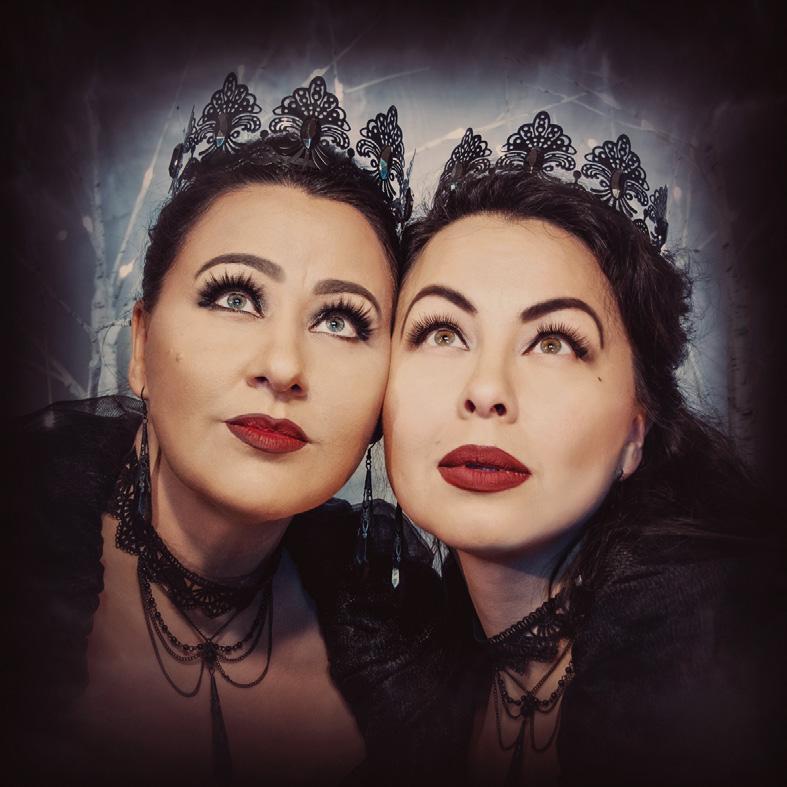
Edicts of the Christian church, along with those of the Canadian government, nearly spelled the end to Inuit throat singing. So, sisters Inuksuk Mackay and Tiffany Ayalik , who are the recording duo known as PIQSIQ, understood the contradictions when they decided to make a Christmas album based on the vocal tradition of their ancestors.
Christmas was such a joyful time, Ms. Mackay said in a recent interview. “We wanted to be able to embrace it in a way that felt honest and true for us. Instead of just excluding ourselves, we decided that we were just going to reclaim it in a different way.”
Ms. Mackay does not consider herself to be a Christian. But she and her sister both sang in the church choir, and the Christmas season holds many good memories for the sisters.
“In Kugluktut, Nunavut, where we would spend most of our Christmases and spring and summer breaks, the Christmas celebrations are just second to none,” she says. “It’s two weeks straight of feasting, games, and dances, and it’s just some of the most fun memories we’ve had.”
They grew up loving Christmas music. That led to the decision to make the PIQSIQ Christmas album three years ago. Since then they have released a new Christmas single every year. This year, they tackled Ave Maria.
“It was a difficult session,” says Ms. Mackay. “The harmonies are very complicated and so is the rhythm. The singing is in four-four time, but the phrases for the instrumental, which we did vocally, is three-four. It’s a complicated song to do. And, of course, the aria is difficult as well. But we’ve just received a final edit and it sounds gorgeous. We’re very excited to share it with everybody.”
Long before the birth of Christ, Indigenous Peoples all over the world held celebrations around the time of the winter solstice. The Christian Church chose the solstice as the time to mark Christmas, as it displaced the pagan religions of Europe.
In the Canadian Arctic, “we already had festivals and celebrations in place during those times,” says Ms. Mackay. “And I think it’s really brilliant to have some sort of morale-boosting, comforting celebration during the darkest nights of the year. There is wisdom in celebrating the return of the light and the moving into spring.”
For that reason and others, creating their 2019 holiday album Quviasugvik: In Search of Harmony “felt very natural to us,” she says. It is a haunting collection of standards including Carol of the Bells, What Child Is This, and God Rest Ye Merry Gentlemen.

Ms. Mackay says she does not remember a time when she and her sister were not throat singing, a vocal artform that is done by women and is partly about the music but is also a game called Katajjaq.
“It’s something that we would play together as sisters growing up in Yellowknife and it’s something that we would also play with our cousins when we would visit family in Nunavut,” she says. “And when it was just the two of us out camping, we’d be bored down to our last colouring book. So, we would sing songs together for hours just to pass the time.”
In Katajjaq, there is a leader and a follower. When the leader is breathing out, the follower is breathing in, and sounds are made on both the inhalation and the exhalation.
“It’s a little bit like a round but, instead of waiting a whole verse to jump in, it’s just a split second,” says Ms. Mackay. “You’re sort of singing in cannon with one another. And, if you miss the beat, your partner wins. And, if you laugh, your partner wins. So, it often ends in an uproar of laughter.”
17
Pictured: sisters, Inuksuk Mackay and Tiffany Ayalik
PiQSiQ
EMBRACING THROAT SINGING AT CHRISTMAS

-
• NWAC 18
“There is wisdom in celebrating the return of the light and the moving into spring. “
KCI
NIWESQ
Pictured: sisters Tiffany Ayalik (L) and Inuksuk Mackay (R)
Christian priests considered throat singing to be pagan, if not demonic, and banned the practice. Those Inuit women who persisted were shamed and could be fined or even thrown in jail. As a result, by 1960, throat singing was nearly extinct and, where it persisted, had very much gone underground.
Then the Anglican Church appointed an Inuk priest in Nunavut. He encouraged a group of Inuit women to record throat singing on wax cylinder so that it wouldn’t be lost.
“That was the beginning of the revival,” says Ms. Mackay. “Having somebody who looked like us in the church telling us it was safe again was the beginning of bringing it back.”
Although many songs have been lost, large numbers have been preserved and have become well known throughout Inuit communities.
“And there’s also artists who are composing new ones,” says Ms. Mackay. “So it has had its life breathed back into it. Since the ’80s, it has had a really gorgeous renaissance. And we’re lucky enough to be part of that.”

PIQSIQ’s Ave Maria will become available December 1 on Bandcamp and a short while later on all major platforms.
The sisters managed to remain busy throughout the pandemic and completed an intense fall tour. They will be releasing a new full-length album after Christmas. Still, the holiday recording of 2019 remains a fan favourite.
“We had a lot of conflicts, internally, between Christianity and its celebrations, and colonization and being in a modern age,” says Ms. Mackay. “Our Christmas music is a response to that. We can find harmony and stitch together our experiences in a way that feels authentic to us. It was sort of our decolonial act of Christmas, to find a way for our families to embrace it in practices that feel good and comfortable and safe for us.”
KCI - NIWESQ • NWAC 19
“Our Christmas music is a response to that. We can find harmony and stitch together our experiences in a way that feels authentic to us. “
THE BEAUTY AND ART
OF CRAFT - MAKING AT CHRISTMAS TIME
Catherine Byrne
,
seal-skin crafter in York Harbour, Nfld.
It took Catherine Byrne falling ill before she embraced sealskin art. Today, she is a sealskin crafter—an occupation her father, a sealer, would be proud of.

Catherine Byrne’s father was a sealer. So it’s fitting that the beautiful crafts coming out of her sewing room are heavily adorned with sealskin.

Ms. Byrne, whose ancestors were Métis from Ontario, is semi-retired from her job as a hair stylist but she still works two days a week in her salon in York Harbour near Corner Brook on Newfoundland’s west coast.
A couple of years ago, she fell ill and could not cut hair. “I was off sick for a couple of months and I’m like, ‘Oh my gosh, what am I gonna do?’” says Ms. Byrne. “And I had a friend that wanted me to make her a seal skin purse.”
The purse was a hit, both with her friend and other people who saw it and started asking for something similar. That was the beginning of Ms. Byrne’s crafting business. Today she still makes purses. But she also fashions slippers, mittens, and wallets that are beautifully adorned with sealskin. Sometimes she will crochet a hat, trim it with sealskin, and decorate it with a fox fur pompom or she will craft intricate sealskin jewellery.
She purchases the seal skin from a plant in Dildo, on the east coast of the island, where the hides are collected from sealers and then tanned. “The possibilities are endless when it comes to what you can do with it,” says Ms. Byrne.
Christmas was a huge event for her when she was growing up.
“I come from a big family. There’s nine of usand Christmas was always a big thing,” she says. “We never had much, but our biggest thing was to get this stocking and to get apples and oranges because we didn’t have them all year round.”
So it’s natural that Christmas decorations are among her wares. She decorates Christmas ornaments with Newfoundland dogs or Newfoundland tartans and sealskin.
“I buy toy angels and I strip them down and
She says making Christmas decorations puts her in a festive mood. “I was doing the Santa Claus this morning and it was kind of like ‘OK, Christmas is coming’.”
Many of Ms. Byrne’s crafts, including her Christmas decorations, are for sale at the Artisanelle boutique on the main floor of NWAC’s new Social, Cultural, and Economic Innovation Centre.

“My dad was a sealer. He would be so proud of me, if he were still alive, to know that I’m making stuff out of sealskin,” says Ms. Byrne. “It’s great when you create things and, when you get done, it’s so beautiful and satisfying.”
CATHERINE BYRNE
20
"It's great when you create things and, when you get done, it's so beautiful and satisfying."
PICTURED: Catherine Byrne crafts
The Beauty and Art OF CRAFT-MAKING AT CHRISTMAS TIME
Alicia Asp-Chief
Balance through beading: Alicia Asp-Chief, Algonquin and Tahltan First Nations artist, says beading reminds her to relax and reflect. she says beading relaxes her and brings a sense of balance to her life.

Ms. Asp-Chief works in the mental wellness division of Indigenous Services Canada. She sings professionally under the name Alicia Kayley, with her musical styles ranging from classical and opera to pop and R&B. Among her popular videos, which are posted to her Facebook page as well as to YouTube, is a cover of Justin Bieber’s song Mistletoe.
Ms. Asp-Chief has been singing since she was a preschooler. She was accepted into a vocal program at a specialized arts high school in Ottawa and then attended Carleton University where she recently graduated with a Bachelor of Music and a minor degree in Indigenous studies.
But beading has also been part of her life from an early age.
“Beading provides me with a sense of balance and relaxation. It also provides me with a sense of accomplishment each time I finish a project,” says Ms. Asp-Chief.
She creates lanyards, hats, shoes, necklaces, medallions, and earrings as well as Christmas ornaments.
“I take the classic Christmas ball ornament and bead around the surface and add fringe with contrasting colours and charms that typically coincide with the classic Christmas colours,” says Ms. Asp-Chief. “I also include a few very unique ornaments with charms such as strawberries, feathers, jingle bells,

Her own Christmas celebrations are divided between family in Ottawa and in Dease Lake,
British Columbia. “Christmas is always such an exciting time for me,” she says. “I enjoy getting to see all of my relatives, taking in the amazing view of the snowy mountains, and definitely enjoying a lot of great food with some great company.”
Making the beaded ornaments is a buildup to the season. “I typically create them at home at my little beading station while watching my favourite holiday movies to get me in the holiday spirit,” says Ms. Asp-Chief. “Once I start bringing out my Christmas ornament-making materials, I get an amazing overwhelming feeling of excitement for the holiday season that is coming.”
“Once I start bringing out my Christmas ornament-making materials, I get AN AMAZING overwhelming feeling of excitement for the holiday season that is coming.“
- ALICIA ASP - CHIEF

NIWESQ • NWAC 21
beader in Ottawa
PICTURED: alicia Asp-Chief and her crafts taken by Kevin Chief.
NWAC
HOLIDAY DECORATIONS
The Social, Cultural, and Economic Innovation Centre
of the Native Women's Association of Canada (NWAC) is festooned this December, filled with holiday decorations that have a decidedly Indigenous flare.
From holiday dolls, to suede tree ornaments, to delicate wind catchers, the Centre’s holiday décor features intricate work from multiple First Nations, Inuit, and Métis artists.

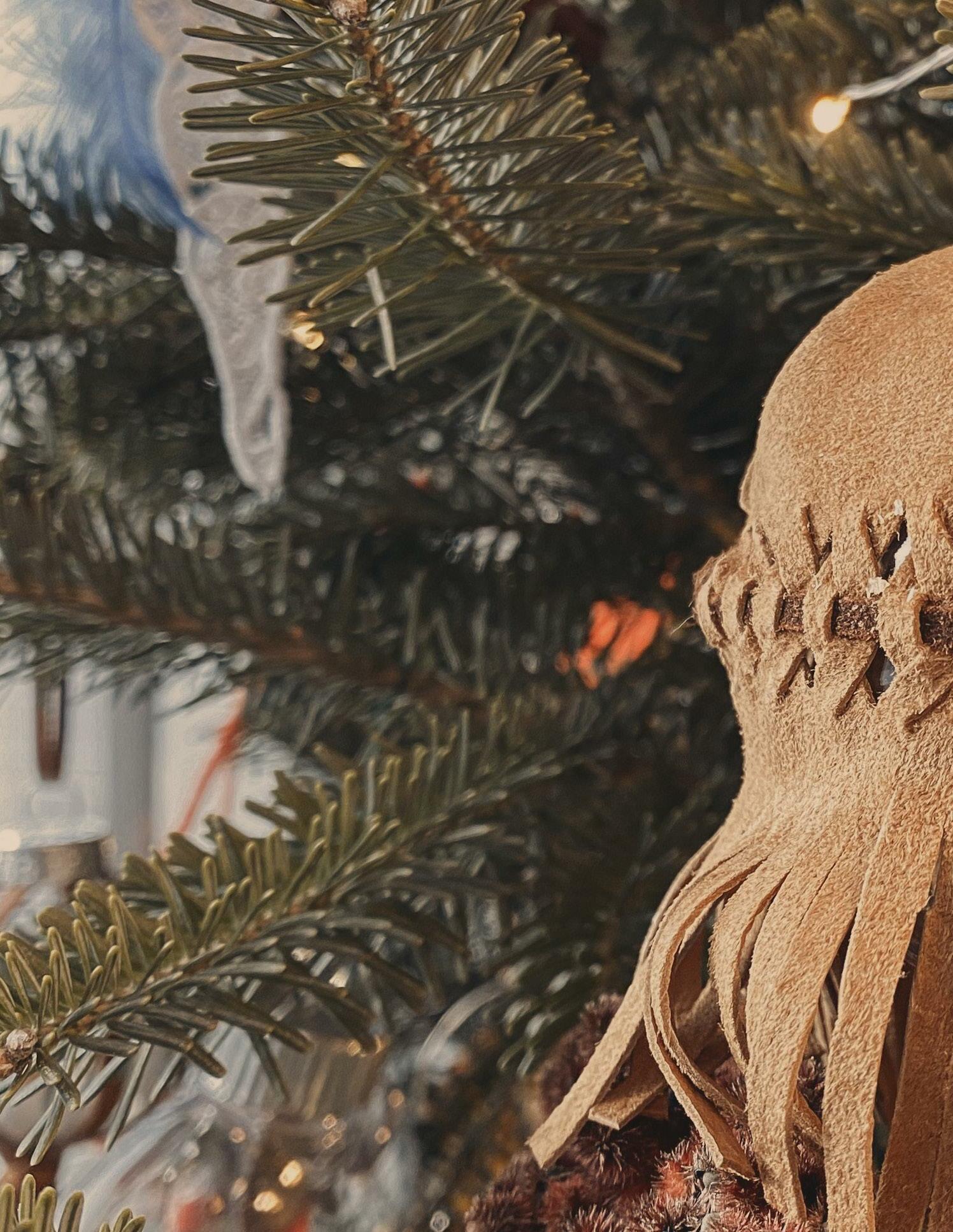
Not long ago, it was difficult to find Indigenous ornaments. But because so many First Nations, Inuit, and Métis people are returning to traditional crafting, tree decorations that reflect Indigenous cultures can now be found in abundance.
NWAC is helping to promote this resurgence through workshops, most of which are offered online. Workshops are helping Indigenous artisans reconnect with their heritage by relearning artisanal crafts. Items are available for purchase at the Artisanelle Boutique, on the Centre’s main floor.
KCI - NIWESQ • NWAC 22

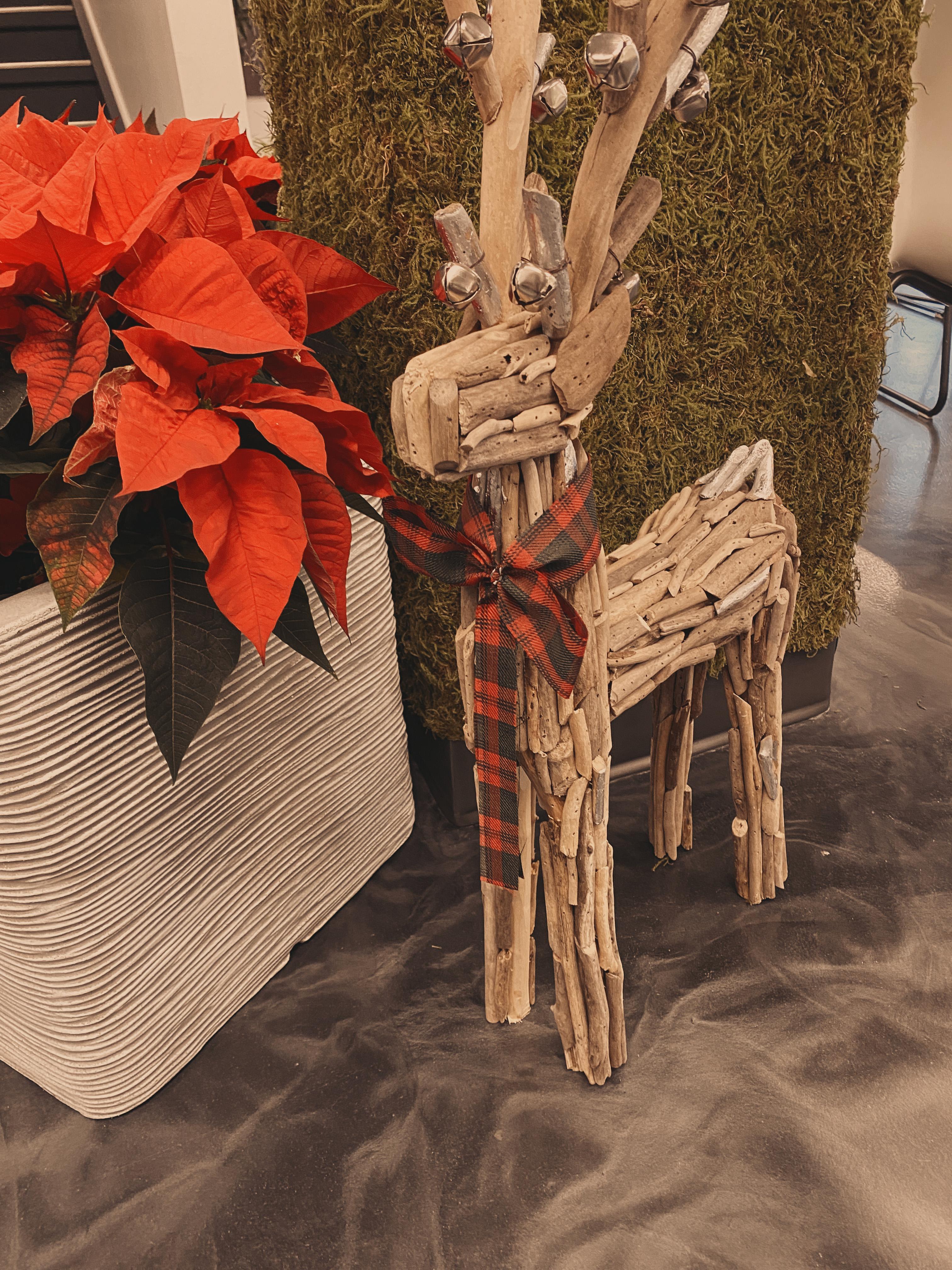
KCI - NIWESQ • NWAC 23


NWAC
KCI - NIWESQ • NWAC 24
HOLIDAY DECORATIONS

KCI - NIWESQ • NWAC 25

KCI - NIWESQ • NWAC 26
KCI-NIWESQ
is a monthly magazine of the Native Women’s Association of Canada (NWAC). Its objective is to highlight the work of the organization and to tell the stories of the Indigenous women of Canada.

NWAC, which was founded in 1974, is a national Indigenous organization representing First Nations (on and off reserve, with status and without), Métis, and Inuit women, girls, and gender-diverse people in Canada. Its goal is to enhance, promote, and foster the social, economic, cultural, and political well-being of Indigenous women within their respective communities and Canadian society.
PUBLISHER
LYNNE GROULX NWAC Chief Executive Officer EDITOR JOAN WEINMAN
SENIOR WRITER
GLORIA GALLOWAY DESIGNER
WRITER
KYLA ELISABETH
ISSUE 15 KCI - NIWESQ • NWAC 27
ASHLEY ESPINOZA

nwac.ca












 Pictured: Dr. Blair Stonechild taken by First Nations University
Pictured: Dr. Blair Stonechild taken by First Nations University


 - DR. STONECHILD
- DR. STONECHILD






















